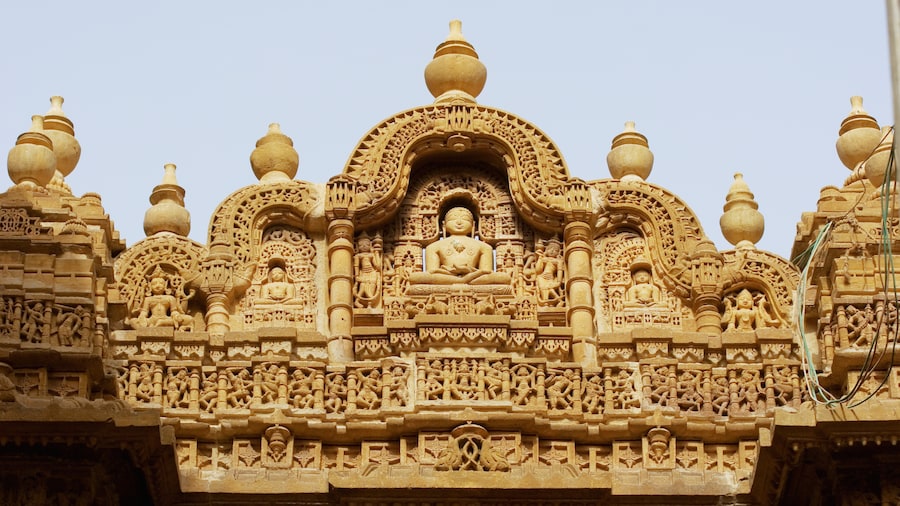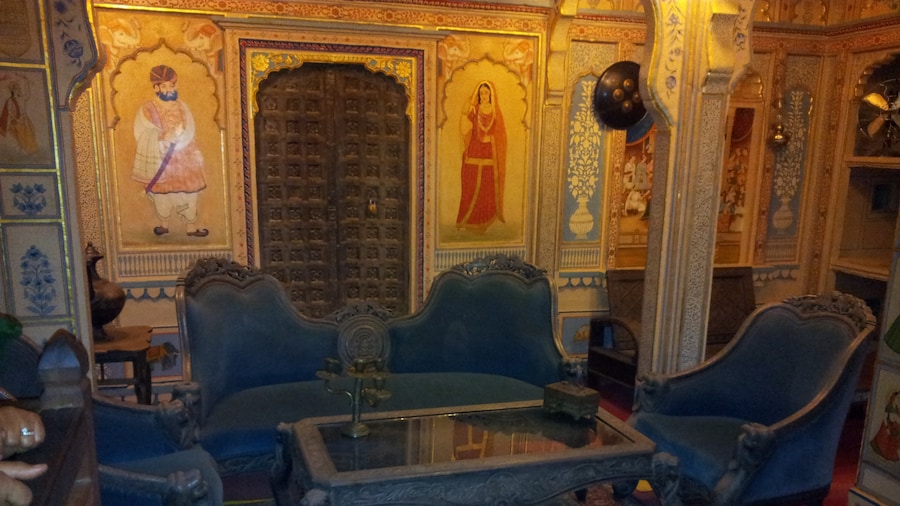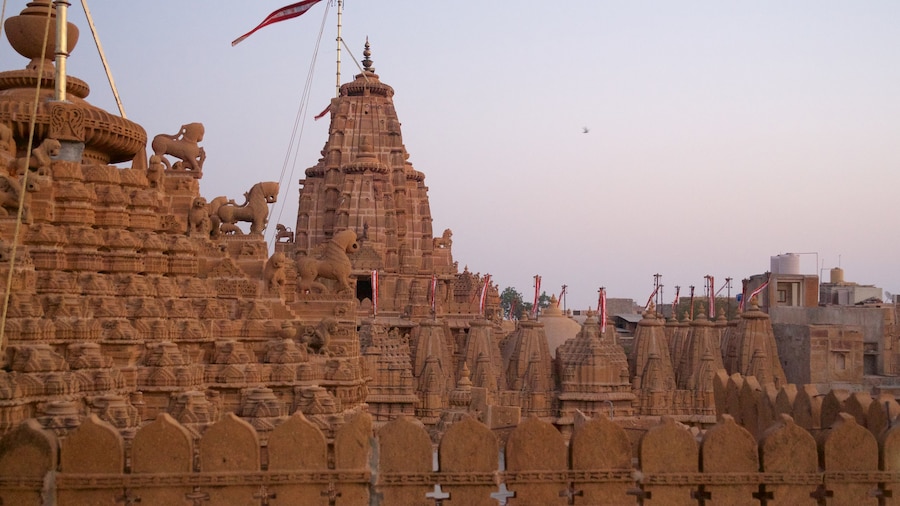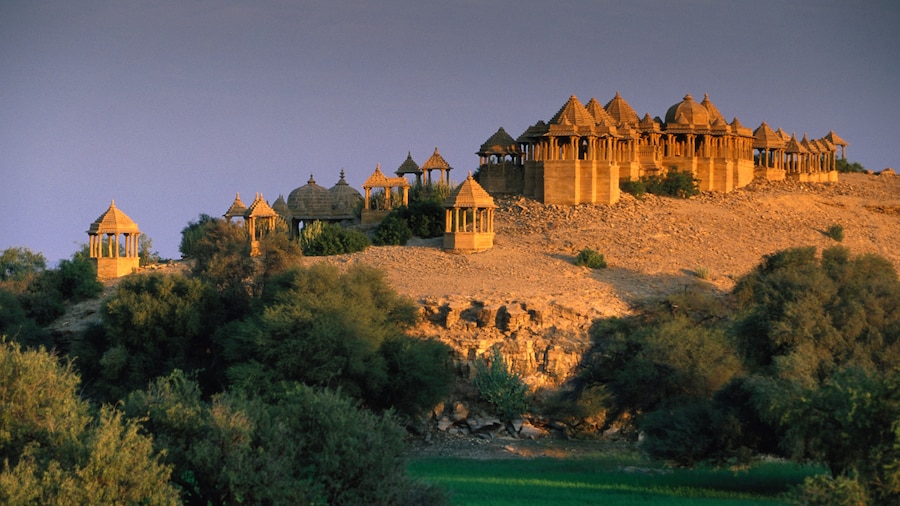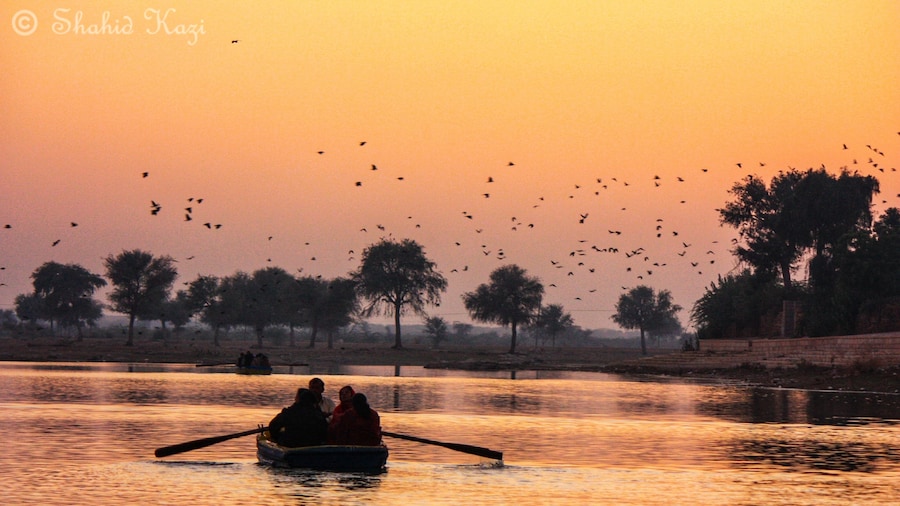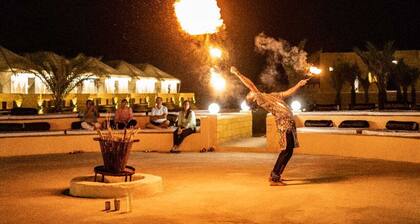Khaba Fort is a ruined citadel set amid a barren desert village. It’s an architecturally impressive landmark full of eeriness, history and mysticism. Wander the dusty streets lined with crumbling houses and almost devoid of human activity. Khaba Fort dates back to the 13th century and was once an important part of Kuldhara, a village inhabited by Paliwal Brahmins. Sometime during the 1800s the residents fled the village and left behind a ghost town.
Climb the staircase to the fort’s entrance and imagine a time when it was the focal point of a prosperous village. Admire the turreted towers, elegant windows and intricate latticework. They serve as a testament to the artistic talents of the Paliwal Brahmins. Walk along the ramparts and enjoy uninterrupted views of the village below and the surrounding countryside. Go to the fort’s small museum to see displays of archaeological artifacts found in and around the fort.
Take time to stroll through the spookily quiet streets of Kuldhara, which stretch out from the base of the fort. Visit an impressive Shiva temple, check out the mud huts and peer down staircases that travel deep underground. Find the remains of more than 80 deserted sandstone abodes. A rumor states that before leaving, the former residents cast a spell to prevent anyone from settling in the village.
While there is little human movement here, you might see farmers herding cattle and women milking animals. Watch for the musters of colorful peacocks that roam freely among the ruins.
The fort is about a 30-minute drive from Jaisalmer. Many people visit the fort as a side trip on their way to Sam Sand Dunes. Alternatively, take a taxi or public bus from the city center.
Khaba Fort is open daily and has an admission fee. Visit at sunrise or sunset, when you can watch the sandstone buildings and surrounding desert dramatically change appearance.





